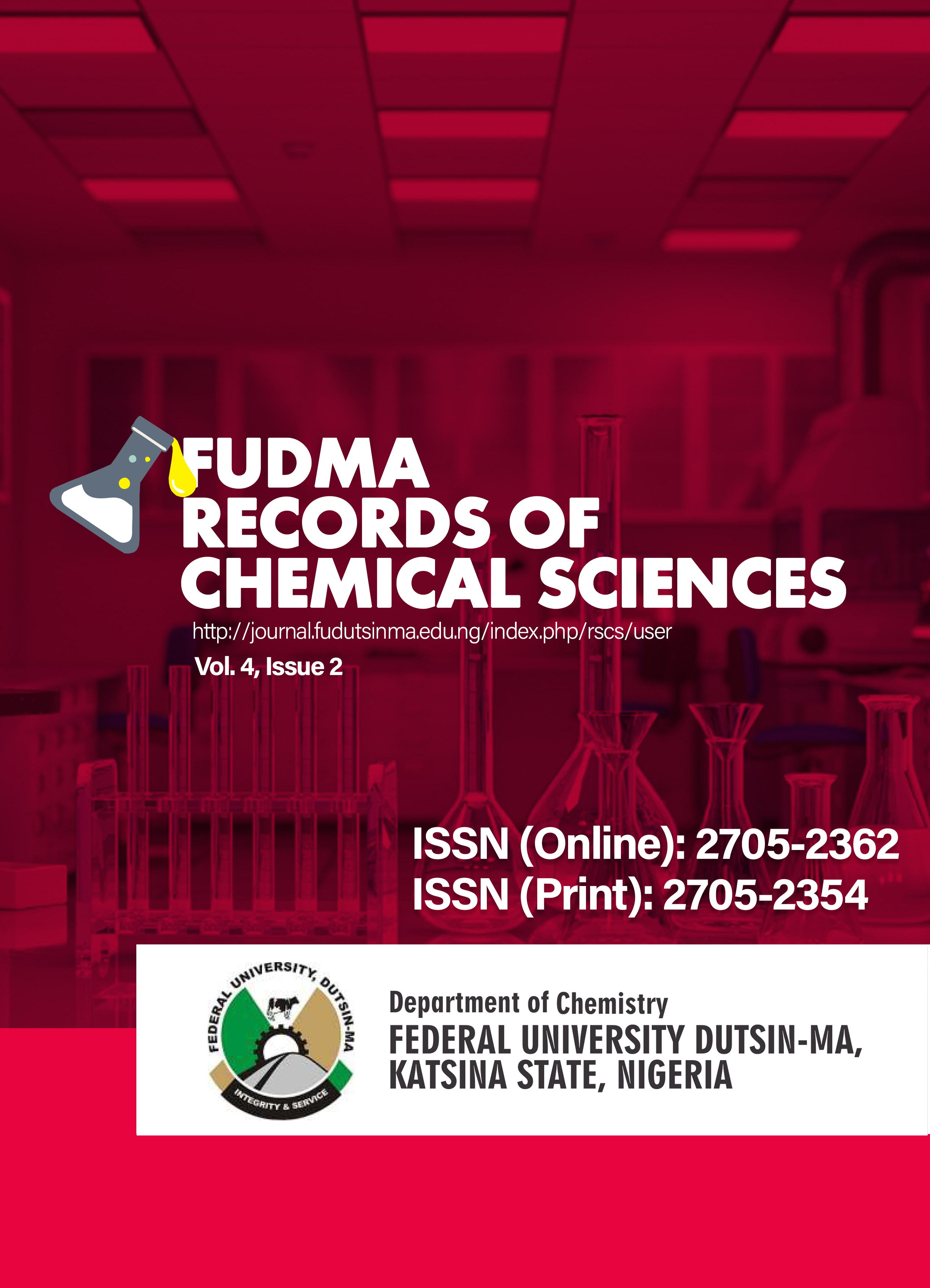Synthesis and Optimization of Trimethylolpropane-Based Biolubricant from A Blend of Crude Soybean, Fish, and Waste Peanut Oils
DOI:
https://doi.org/10.33003/frscs-2025-0402/07Keywords:
Optimization , transesterification , biolubricant , blend , BBD-RSM , trimethylolpropaneAbstract
The study aimed to create a trimethylolpropane-based biolubricant from crude edible
and waste cooking oils to reduce greenhouse gas emissions and global warming. The
biolubricant was produced through two-steps esterification and transesterification
reactions using trimethylolpropane (TMP) in the presence of potassium hydroxide and
methanol. A Box-Behnken Design (BBD)-based response surface methodology was
utilized to optimize the reaction conditions, including blend oil methyl ester (BOME)
to TMP molar ratio (3:1–7:1 wt%), temperature (60–100 ˚C), and reaction time (60
120 min), in 17 experimental procedures to achieve enhanced triester yield. The
quadratic model was found to adequately predict the test yield, with an R2 value of
0.9054. An optimum yield of 91.097% was suggested at a molar ratio of 6.5:1 wt%, a
temperature of 61.1 ˚C, and a reaction time of 60.8 min, which correlates with the
experimentally mean value of 90.977% with a 0.13% difference. The physicochemical
properties of the blended oil triester (BTE) showed viscosity of 72.7 and 11.8 mPa/s at
40 and 100 ˚C, a viscosity index of 136, a flash point of 205 ˚C, and a pour point of
2.5 ˚C.






